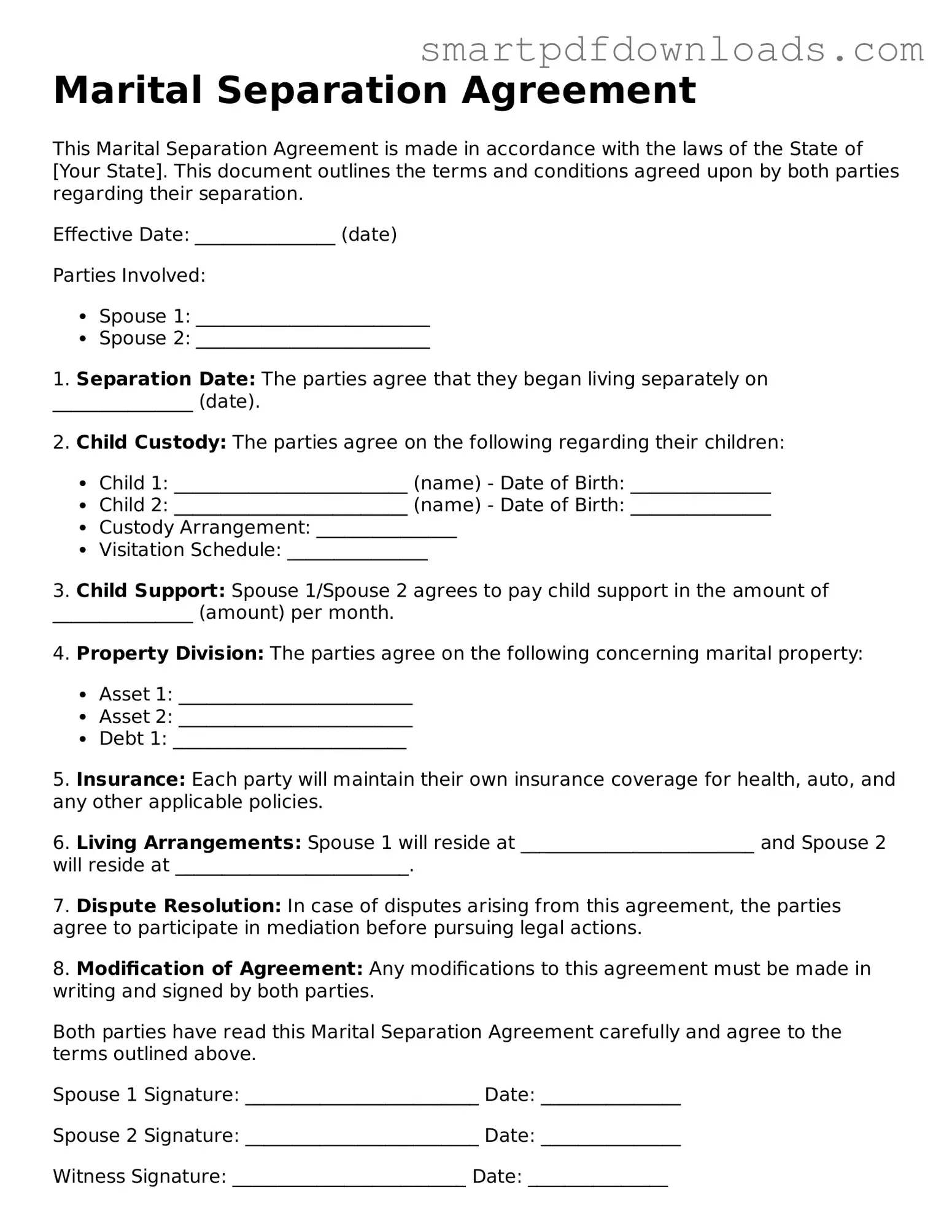Marital Separation Agreement
This Marital Separation Agreement is made in accordance with the laws of the State of [Your State]. This document outlines the terms and conditions agreed upon by both parties regarding their separation.
Effective Date: _______________ (date)
Parties Involved:
- Spouse 1: _________________________
- Spouse 2: _________________________
1. Separation Date: The parties agree that they began living separately on _______________ (date).
2. Child Custody: The parties agree on the following regarding their children:
- Child 1: _________________________ (name) - Date of Birth: _______________
- Child 2: _________________________ (name) - Date of Birth: _______________
- Custody Arrangement: _______________
- Visitation Schedule: _______________
3. Child Support: Spouse 1/Spouse 2 agrees to pay child support in the amount of _______________ (amount) per month.
4. Property Division: The parties agree on the following concerning marital property:
- Asset 1: _________________________
- Asset 2: _________________________
- Debt 1: _________________________
5. Insurance: Each party will maintain their own insurance coverage for health, auto, and any other applicable policies.
6. Living Arrangements: Spouse 1 will reside at _________________________ and Spouse 2 will reside at _________________________.
7. Dispute Resolution: In case of disputes arising from this agreement, the parties agree to participate in mediation before pursuing legal actions.
8. Modification of Agreement: Any modifications to this agreement must be made in writing and signed by both parties.
Both parties have read this Marital Separation Agreement carefully and agree to the terms outlined above.
Spouse 1 Signature: _________________________ Date: _______________
Spouse 2 Signature: _________________________ Date: _______________
Witness Signature: _________________________ Date: _______________
